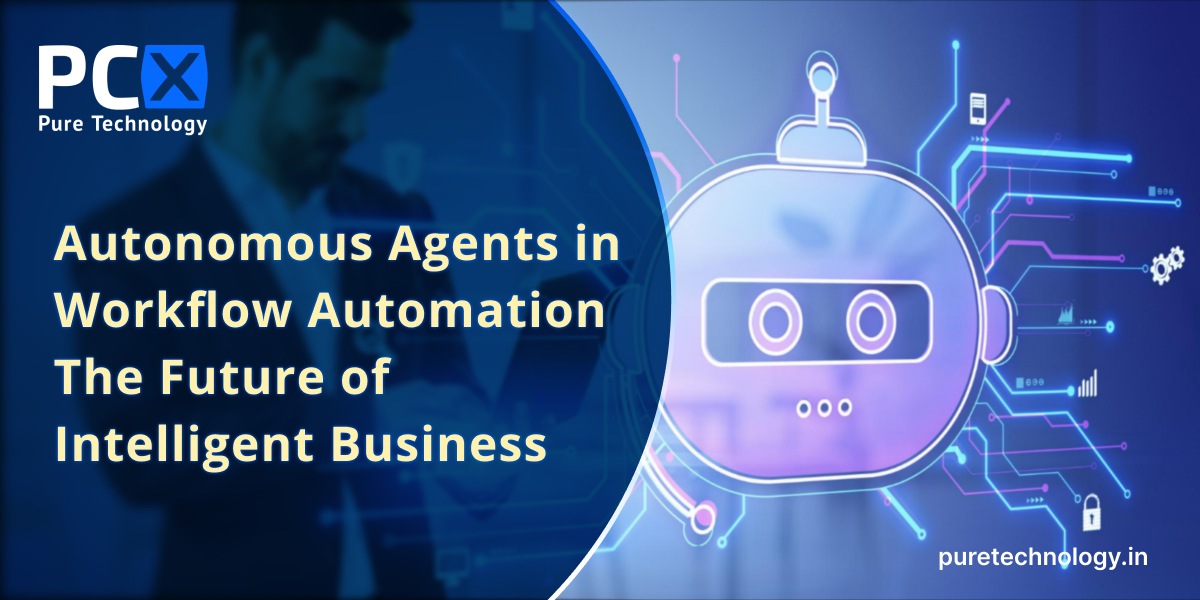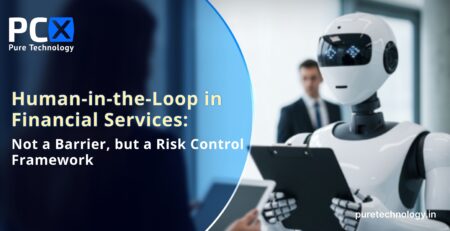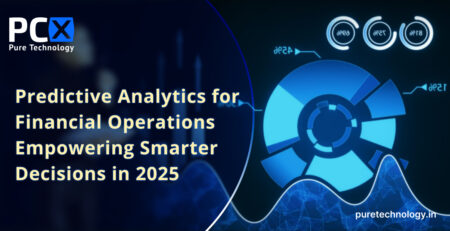Autonomous Agents in Workflow Automation: The Future of Intelligent Business
Introduction
In the era of digital transformation, businesses constantly seek smarter ways to increase efficiency while maintaining accuracy and agility. Autonomous agents in workflow automation are emerging as a pivotal technology empowering organizations to automate complex processes end-to-end with minimal human intervention. Unlike traditional automation, which follows rigid, pre-defined rules, autonomous agents dynamically adapt, make decisions, collaborate, and optimize workflows in real time. At Pure Technology, we leverage this next-generation AI capability to help companies break down operational silos, enhance productivity, and achieve unprecedented process resilience.
What are Autonomous Agents?
Autonomous agents are intelligent software systems equipped with AI capabilities that enable them to independently perform tasks, make decisions, learn from interactions, and adjust actions without constant human oversight. They interpret contextual data, interact with multiple systems or APIs, and execute workflows while adapting to changing conditions and exceptions.
How Do Autonomous Agents Work in Workflow Automation?
- Trigger and Activation: Autonomous workflows begin when an event occurs, such as a new customer order, a service request, or breached SLA. The agent detects triggers via natural language commands, sensor inputs, or system notifications.
- Task Planning: The agent breaks down the overall goal into individual, manageable subtasks and sequences them for execution, employing AI planning algorithms.
- Execution: It performs actions such as accessing databases, invoking APIs, sending emails, or collaborating with other agents to progress the workflow.
- Real-Time Adaptation: Unlike fixed rule-based bots, autonomous agents continuously monitor outcomes and dynamically adjust strategies—rerouting workflows, escalating exceptions, or retrying tasks as needed.
- Completion and Handoff: Upon workflow completion, agents close the loop or transfer context to human stakeholders for further action, ensuring seamless process continuity.
Agentic Process Automation: The Foundation
Autonomous agents operate as a network of collaborative micro-agents spanning different departments, systems, and platforms. This “agentic” model breaks the traditional barriers of siloed automation by enabling end-to-end, cross-functional workflows driven by AI intelligence. By integrating with ERP, CRM, finance, procurement, and other core systems, agents orchestrate complex processes previously too labor-intensive or brittle to automate.
Benefits of Autonomous Agents in Workflow Automation
- End-to-End Automation: From initiation to closure, agents handle multi-step, multi-system workflows reducing manual intervention and errors.
- Enhanced Agility: Dynamic adaptation to changing conditions makes operations resilient to disruptions such as system failures or unexpected data variations.
- Operational Efficiency: Agents accelerate processing times, reduce costs, and improve compliance through consistent execution and audit trails.
- Scalability: Autonomous agents scale effortlessly across the enterprise, handling increasing volumes and complexity without proportionate increases in workforce.
- Improved Decision-Making: By combining AI-driven analysis with trusted operational workflows, agents make faster and more informed decisions.
Real-World Use Cases
- Customer Service: Autonomous agents handle support tickets from receipt to resolution—triaging issues, accessing account details, and escalating complex cases—all with minimal human input.
- Finance and Accounting: Agents execute entire invoice processing workflows, adapting to new vendor formats, validating entries, and routing approvals dynamically.
- Supply Chain: Agents coordinate order fulfillment by interacting with inventory management, logistics providers, and customer notifications, ensuring timely deliveries despite fluctuating conditions.
- Human Resources: Handling onboarding tasks autonomously—from document verifications to equipment provisioning and training scheduling.
- IT Operations: Automated monitoring, incident detection, remediation workflows, and system updates driven by autonomous agents reduce downtime and manual workload.
Challenges and Considerations
- Complexity of Integration: Building agent networks requires careful orchestration across diverse enterprise systems and technologies.
- Governance and Oversight: Despite autonomy, governance frameworks must monitor agents to ensure compliance, security, and ethical conduct.
- Technical Infrastructure: Autonomous agents require scalable, secure infrastructure capable of real-time data processing and communication.
- Change Management: Organizations must upskill staff and redesign workflows to fully capitalize on autonomous capabilities.
Conclusion
Autonomous agents represent a paradigm shift in workflow automation, turning static, siloed processes into intelligent, adaptive, and collaborative operations. By embracing agentic AI, businesses unlock heightened efficiency, resilience, and scalability—advantages that define success in today’s fast-evolving markets. Pure Technology is your trusted partner for harnessing autonomous agents to transform workflows and propel growth through intelligent automation.
Call us for a professional consultation












Leave a Reply